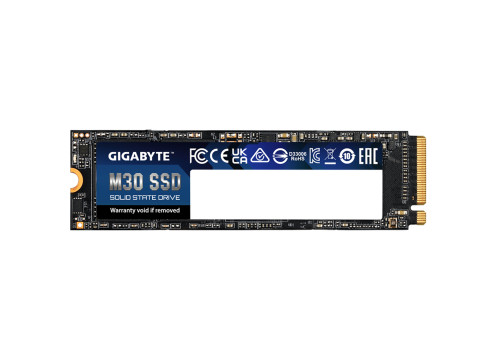
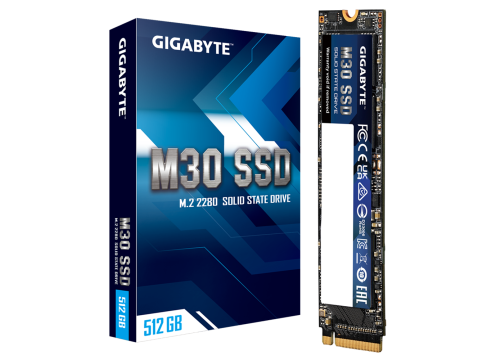
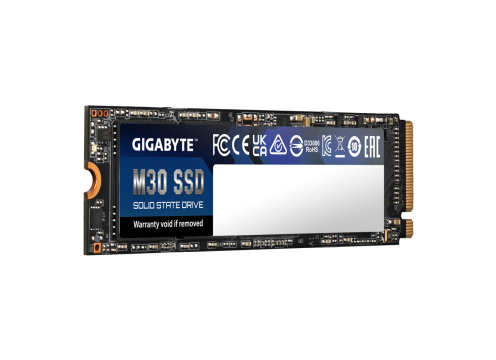
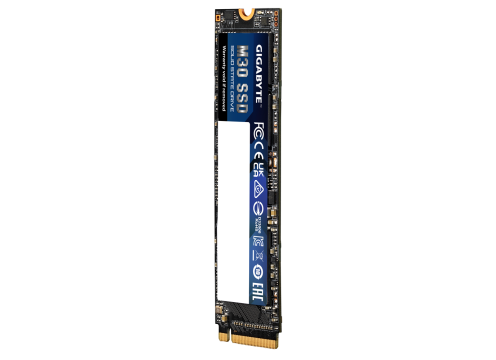
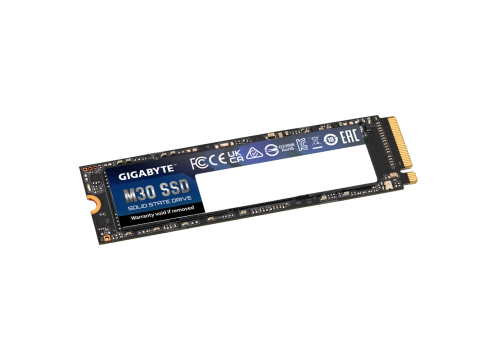





Gigabyte SSD 512GB M30 M.2 PCIE NVMe
P/N:
GP-GM30512G-G
Warranty:
5 Years
Manufacturer:
+ PCIe 3.0x4, NVMe 1.3 interface + SLC Cache + External 2Gb DDR3L Cache + Advanced LDPC error correction + 2 oz PCB design for efficient thermal solution
Specification
Disk Type
M.2 2280
Disk Capacity
512GB
Interface
PCI-E x4
Storage Memory
3D/V NAND
Read Speed
up to 3500 MB/sec
Write Speed
up to 2600 MB/s
Features
TRIM
\ S.M.A.R.T
\ Error Correction
Package
Retail
Information
| Xtreme Storage Performance With the high-quality controller and flash, GIGABYTE M30 SSD can reach up to 3500 MB/sec sequential read, and up to 2600 MB/s sequential writes. Moreover, it comes with the DDR3L DRAM, SLC Cache, and advanced LDPC error correction to enhance the performance. It’s an ideal choice for gamers, PC enthusiasts, and content creators. |
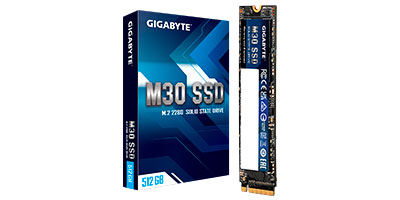 |
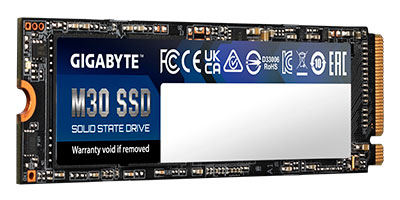 |
Breaking Limitations GIGABYTE M30 SSD delivers outstanding performance: up to 3500 MB/sec sequential read, and up to 2600 MB/s sequential write. Equipped with a robust combination of controller and 3D NAND, M30 is up to 6 times faster than SATA III Solid State Drives and reach the limit of PCIe Gen3x4. |
| Ultra Durable, 2 oz copper PCB Design Under a high-stress workload, most SSD controllers can peak over 70°C. In this situation, the drives will start slowing down to avert itself from failing. The hotter your SSD runs, the quicker it wears out the flash inside of the drive. GIGABYTE M30 SSD applied with 2 oz copper PCB design, which helps dissipate heat and prevent throttling. |
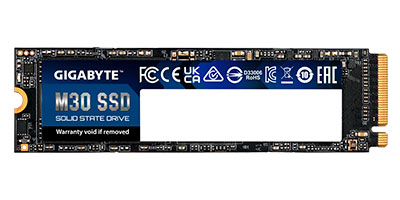 |
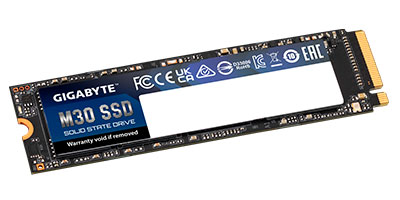 |
Lower temperature, better performance GIGABYTE M30 SSD not only offers incredible performance but also handles heavy workloads without overheating. Thanks to the improved efficiency thermal solution by using 2 oz copper PCB, GIGABYTE M30 SSD decrease 16% working temperatures compare with regular SSD without a heatsink. |
| External DDR3L DRAM Cache GIGABYTE M30 SSD is equipped with high speed DDR3L DRAM cache and does not need to reserve over-provisioning space, thus improving the random Read/Write performance. This means the users can use the full capacity of the drive. Moreover, external DRAM can be a buffer between controller and NAND flash for sustained performance when capacity is occupied by more and more data. |
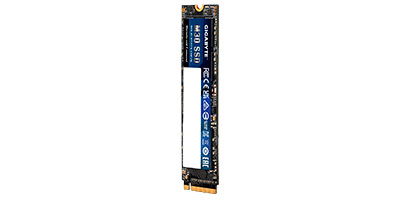 |

